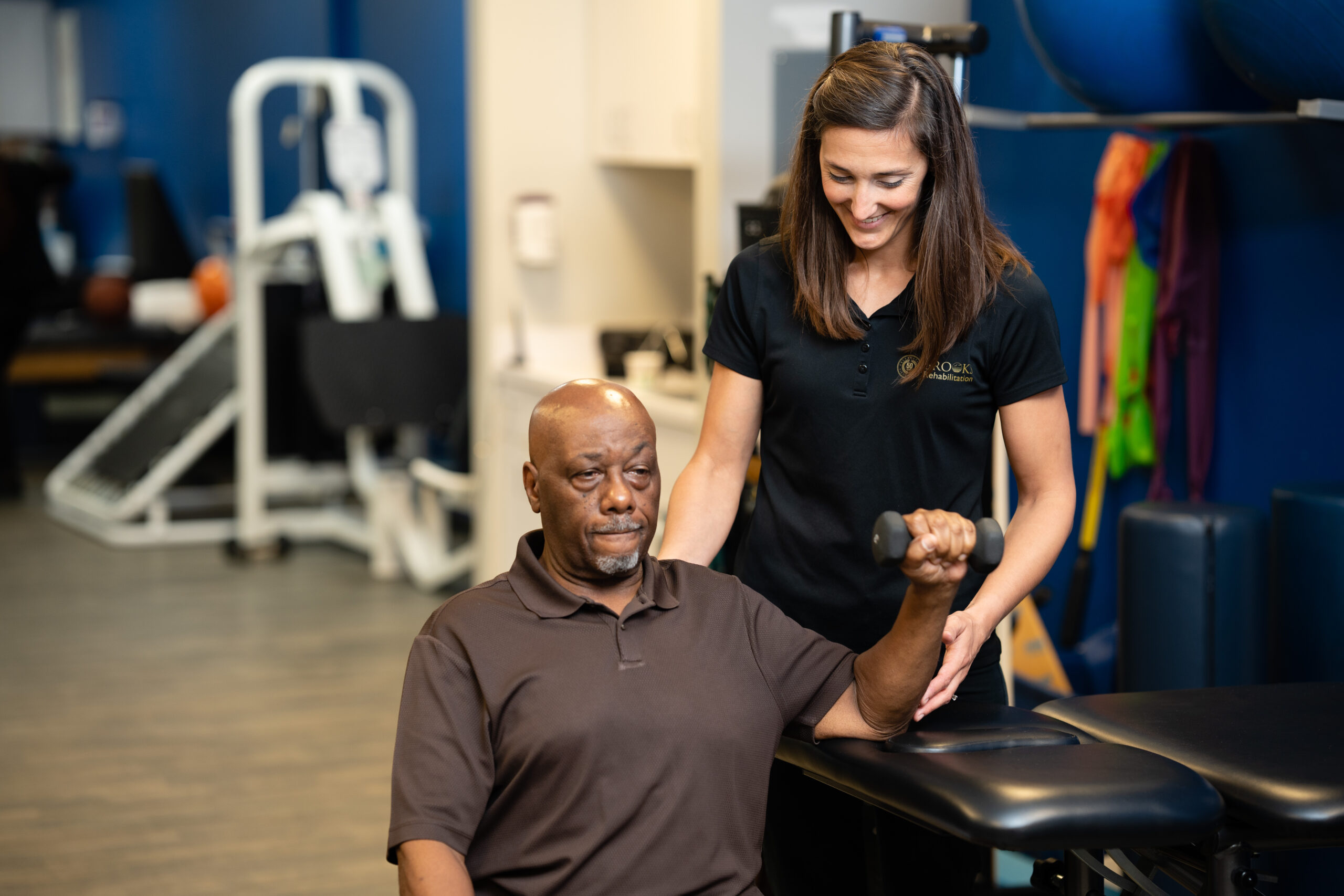What Is Shoulder Impingement Syndrome?
Shoulder impingement occurs when soft tissue in the shoulder gets pinched with movement. It can affect tendons, or a small cushioning sac called the bursa. This pinching is a common cause of shoulder pain and makes daily activities uncomfortable. Specialized physical therapy plays a key role in reducing pain, restoring movement and preventing future flare-ups.
What Causes Shoulder Impingement?
Shoulder impingement syndrome happens when repetitive overhead movements put unusual stress on the shoulder. This may result from sports, like swimming and tennis, or jobs that involve lifting or reaching.
Other things that can cause symptoms include:
- Bone spurs
- Muscle imbalances
- Poor posture
- Rotator cuff injury
- Shoulder instability due to injury or dislocation
- Structural differences in shoulder anatomy, such as unusually thick tissue
Symptoms of Shoulder Impingement Syndrome
Shoulder impingement symptoms often come on gradually. They also vary from person to person.
You may experience:
- Discomfort at the top or side of the shoulder
- Pain that worsens when lifting your arm overhead or reaching behind your back
- Limited mobility or a catching sensation when moving the shoulder
- Weakness in your arm, especially with lifting or rotating
- Shoulder stiffness or a feeling of tightness
- Symptoms that disrupt sleep, particularly when lying on your side
How Is Shoulder Impingement Syndrome Treated?
Many people achieve lasting relief from shoulder impingement symptoms through physical therapy. At Brooks, orthopedic physical therapists specializing in restoring movement and joint function have a depth of experience. After a careful evaluation, we create a personalized treatment plan for you.
Orthopedic physical therapy for shoulder impingement may include:
- Dry needling: This technique uses thin needles to release muscle tightness near your shoulder and shoulder blade.
- Manual therapy: Your therapist gently guides your shoulder through specific movements to reduce stiffness and help the joint move more freely.
- Neuromuscular electrical stimulation (NMES): We use gentle electrical signals to activate weak muscles, especially those that support the shoulder blade.
- Range of motion exercises: These movements restore flexibility and help your shoulder move through its full range again.
- Strength training: Targeted exercises build up the muscles that support your shoulder, helping you move with less pain and more control.
Why Choose Brooks Rehabilitation for Shoulder Impingement?
Our team provides focused expertise and personalized support to help you recover from shoulder impingement syndrome.
Highlights of our program include:
- Specialized support for stroke survivors: Changes in movement and muscle control after a stroke increase the risk of shoulder impingement. Brooks brings together neurologic and orthopedic therapy experts to create a care plan that’s fully aligned with your needs and recovery goals.
- Convenience: With dozens of outpatient clinics across Florida, expert physical therapy for frozen shoulder is never far away. Many locations offer extended hours, making it easier to start treatment early and stay consistent with your appointments. That means you can keep making progress without disrupting your routine. Become a patient.
FAQs About Orthopedic Physical Therapy for Shoulder Impingement
Shoulder impingement syndrome often doesn’t fully heal without targeted treatment. If symptoms last more than a couple of weeks or start to interfere with daily activities, it’s a good idea to see a physical therapist. The right therapies and hands-on care can speed healing and help prevent symptoms from coming back.
Lying on your side or keeping your arm in one position for too long compresses the shoulder and worsens inflammation. This pressure, combined with stiffness after a day of activity, makes symptoms more noticeable at night. Changing your sleep position and using pillows for support may help reduce nighttime symptoms.
Keeping your shoulder strong, stable and flexible is key. Good posture, regular stretching and avoiding repetitive overhead motions all help. Orthopedic physical therapists at Brooks show you how to move safely and build shoulder strength to lower your risk of future flare-ups.
Request Care at Brooks
Find out more about becoming a patient and learn about orthopedic physical therapy for shoulder impingement.Latest News and Health Resources
Education and guidance to support your recovery
Brooks Rehabilitation Home Health Receives Top Rankings from Newsweek’s 2026 America’s Best Home Health Agencies List
Brooks Rehabilitation is thrilled to announce that its home health division has been named the best in Jacksonville and ranked among the top 20 in Florida on Newsweek's 2026 America’s...




